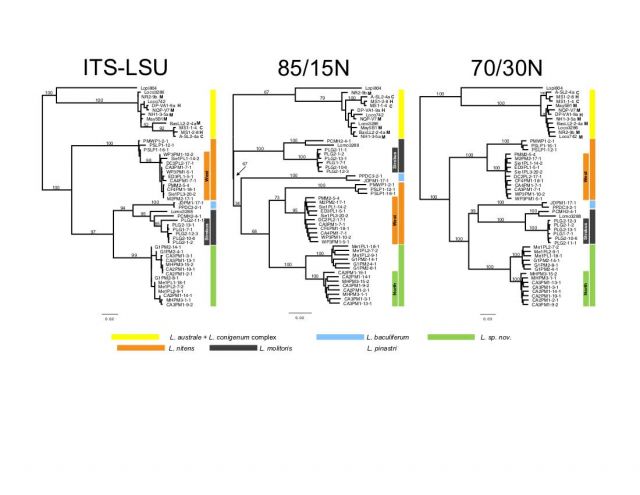New paper outlining the use of ddRADseq on fungal systematics out Early View in Ecology and Evolution

The phylogenetic and population genetic structure of symbiotic microorganisms may correlate with important ecological traits that can be difficult to directly measure, such as host preferences or dispersal rates. This study develops and tests a low‐cost double‐digest restriction site‐associated DNA sequencing (ddRADseq) protocol to reveal among‐ and within‐species genetic structure for Lophodermium, a genus of fungal endophytes whose evolutionary analyses have been limited by the scarcity of informative markers. The protocol avoids expensive barcoded adapters and incorporates universal indexes for multiplexing. We tested for reproducibility and functionality by comparing shared loci from sample replicates and assessed the effects of numbers of ambiguous sites and clustering thresholds on coverage depths, number of shared loci among samples, and phylogenetic reconstruction. Errors between technical replicates were minimal. Relaxing the quality‐filtering criteria increased the mean coverage depth per locus and the number of loci recovered within a sample, but had little effect on the number of shared loci across samples. Increasing clustering threshold decreased the mean coverage depth per cluster and increased the number of loci recovered within a sample but also decreased the number of shared loci across samples, especially among distantly related species. The combination of low similarity clustering (70%) and relaxed quality‐filtering (allowing up to 30 ambiguous sites per read) performed the best in phylogenetic analyses at both recent and deep genetic divergences. Hence, this method generated sufficient number of shared homologous loci to investigate the evolutionary relationships among divergent fungal lineages with small haploid genomes. The greater genetic resolution also revealed new structure within species that correlated with ecological traits, providing valuable insights into their cryptic life histories.